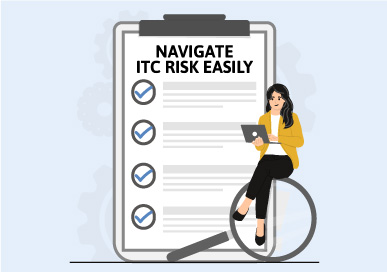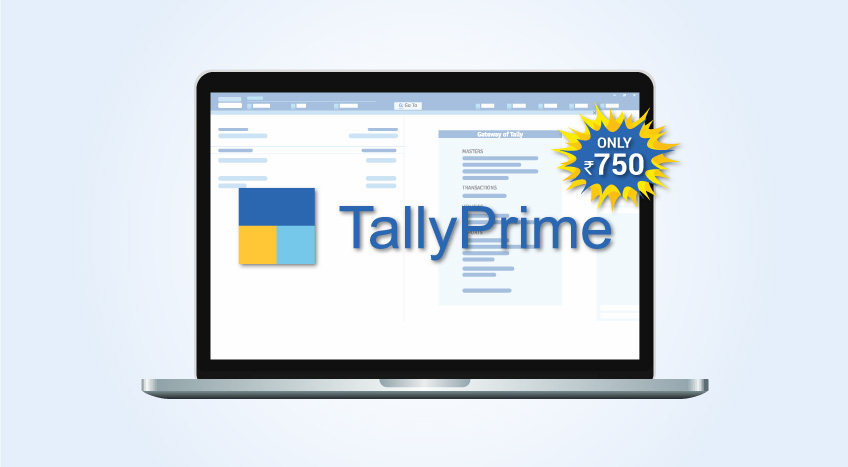After weeks of planning, deciding on a name, and filing the necessary forms, a single document arrives that officially brings your company to life: the Certificate of Incorporation (COI). For any founder of a Private Limited Company or LLP, this document is far more than just a piece of paper. It is the legal birth certificate of your enterprise.
Understanding the significance of the COI is crucial because it marks the point where your business becomes its own legal entity, distinct from you. This certificate unlocks the ability to operate officially, build credibility, and grow.
This article explains what a COI is, the vital information it holds, and how the modern, digital process makes obtaining one easier.
What is a certificate of incorporation?
A certificate of incorporation is an official document issued by the Registrar of Companies (RoC) upon the successful registration of a company or a Limited Liability Partnership (LLP). It serves as conclusive evidence that the company has been legally formed and has complied with all the statutory requirements for incorporation.
Once the COI is issued, your company is officially born. It can now own assets, incur debts, enter into contracts, and sue or be sued in its own name. It has its own legal identity, separate from its directors and shareholders, a concept known as the "corporate veil”.
Key information on your COI
Your COI contains several critical pieces of information that you will use throughout your company's lifecycle. These include:
- Company name: The officially approved name of your company.
- Corporate identity number (CIN): A unique 21-digit alphanumeric code assigned to every company registered in India. This number is used in all correspondence with the Ministry of Corporate Affairs (MCA).
- Date of incorporation: The official "birth date" of your company. This date is crucial for determining compliance deadlines and financial year-ends.
- Registered office address: The official address of your company as registered with the RoC.
- Registrar's signature: The digital signature of the Registrar of Companies, which authenticates the document.
Why is the certificate of incorporation so important
The COI is one of your company's most fundamental documents. Its importance stems from the legal and operational doors it opens.
Here is why it is important:
- Proof of legal existence: It is the ultimate proof that your company legally exists. This is essential for building trust with clients, suppliers, and investors.
- Opening a corporate bank account: A bank will not open a current account in your company's name without a copy of the COI. This account is necessary to manage business finances and receive share capital.
- Entering into legal contracts: Your company cannot legally enter into any contracts, be it a lease agreement, a client contract, or a vendor agreement, until it is incorporated.
- Raising Investment: Investors will only fund a legally registered entity. The COI is the first document they will ask for during due diligence to verify the company's legitimacy.
- Issuing shares: The company can formally issue shares to its shareholders only after it has been incorporated.
Who needs a COI?
|
Business Type |
Needs Certificate of Incorporation |
Alternative Proof |
|
Proprietorship |
No |
GST, Udyam, Shop License |
|
Partnership (non-LLP) |
No |
Partnership Deed, GST, Udyam |
|
LLP |
Yes |
Certificate of Incorporation |
|
Private Limited Company |
Yes |
Certificate of Incorporation |
|
Public Limited Company |
Yes |
Certificate of Incorporation |
The modern process of obtaining a COI
Below are the practical steps you’ll follow on the MCA portal to get your COI. We have split them by entity type: Private Limited Company (via SPICe+) and LLP (via FiLLiP), and included what each linked form does, so you aren’t guessing mid‑application.
Before you start (For both Pvt Ltd and LLPs)
- Create an MCA login (Registered or Business user) and associate Digital Signature Certificates (DSCs) for everyone who must sign (subscribers, first directors/designated partners, and the practicing professional where applicable). A DSC must be associated before it can be used to sign webforms.
- Keep the documents needed ready including ID/address proofs of subscribers/directors/partners, proof of registered office (recent utility bill + NOC from owner if rented), draft capital/contribution split, and main business activity (NIC code).
- The portal computes ROC filing fees and state‑specific stamp duty online which will have to paid by the user.
Private Limited Company - SPICe+ webform
SPICe+ is an integrated, two‑part webform (Part A for name reservation; Part B for incorporation) with linked forms for MoA/AoA, statutory declarations and AGILE‑PRO‑S registrations (EPFO, ESIC, Profession Tax in enabled states, bank account, optional GST, and Delhi Shops & Establishment).
Step 1 - Reserve your name (optional standalone)
- Log in at MCA and open SPICe+ Part A to reserve your company name (you can also file Part A + Part B together). Follow the Companies (Incorporation) name rules while proposing names.
- On approval, Part A shows as “Approved” and you proceed to Part B. (Name approval and incorporation are processed centrally by Central Registration Centre(CRC) )
Step 2 - Fill SPICe+ Part B (the incorporation application)
- Enter company details (class, category, main division/NIC), registered office address, capital structure, and subscriber/first‑director particulars.
- DINs for proposed first directors who don’t have one can be applied within SPICe+ (limit as per current rules; historically up to three DINs).
Step 3 - Complete the linked forms (they open automatically after Part B)
- eMoA (INC‑33) & eAoA (INC‑34): This is your digital Memorandum and Articles. (For special cases like Section 8 companies, the MoA/AoA flow differs, but in general, incorporation via SPICe+ uses eMoA/eAoA.)
- INC‑9 (Declaration by subscribers & first directors): Autogenerated in your application history; you sign it to confirm legal declarations required under section 7.
- AGILE‑PRO‑S (INC‑35): one form to request EPFO, ESIC, Profession Tax (enabled states), opening a bank account, optional GSTIN, and Delhi Shops & Establishment registration along with incorporation, so those numbers/accounts can be allotted/initiated together.
Step 4 - e‑Sign, pay, and submit
- Affix DSCs for required signatories (subscribers/first directors and the professional where applicable), upload, and submit.
- Pay the system‑computed fee and state stamp duty online. (MCA notifies zero ROC fee for incorporations with authorised capital up to ₹15 lakh; stamp duty still applies.)
Step 5 - Scrutiny by CRC and timelines
- Applications are processed by the Central Registration Centre in two phases. In the first phase, the CRC processes applications for name availability through e-form INC-1. In the second phase CRC starts processing e- forms for incorporation of companies. Applications for Name reservation and Incorporation of a company should be processed and completed within D or D+1 days. If something needs fixing, you will get a resubmission note.
Step 6 - Receive your COI (with PAN/TAN on it)
- On approval, MCA issues the Certificate of Incorporation showing your CIN. PAN and TAN are allotted and printed on the COI itself. You will also see the approved set under your ‘Application History’, where you can download the COI/challan.
LLP - FiLLiP webform
Step 1 - Reserve your LLP name (optional standalone)
- Use RUN‑LLP to reserve the proposed name (or you can reserve inside FiLLiP)
Step 2 - Prepare FiLLiP (Simplified Proforma for Incorporating LLP)
- In FiLLiP, provide the registered office, proposed business activity, and partner/designated partner details.
- DPINs for individuals who will be designated partners can be applied within FiLLiP if they don’t already have one. (FiLLiP consolidates name reservation, DPIN, and incorporation in one filing.)
Step 3 - Attachments, e‑sign, pay, submit
- Attach partner consents and office proofs as required, affix DSCs, submit, and pay ROC fee plus state stamp duty as computed by the portal.
Step 4 - Receive your LLP COI
- On approval, MCA issues the LLP COI (Form 16) with your LLPIN.
- PAN allotment is integrated with FiLLiP under CBDT’s system notification (so you don’t apply separately). If TAN isn’t allotted automatically in your case, you can obtain it via the TAN application (Form 49B) with Protean/NSDL after incorporation.
Step 5 - File your LLP Agreement (soon after incorporation)
- Execute your LLP Agreement and file Form 3 on the MCA portal (this is the form used to submit the LLP Agreement and later changes).
You have the COI. What’s next?
Receiving the COI is good, but it also triggers your first set of responsibilities. Here is a list of immediate and essential tasks to get your business operations up and running smoothly.
Immediate Actions (Within 30 Days)
- Open a corporate bank account:
- Action: Visit a bank with your COI, MoA, AoA, and company PAN card to open a current account in the company's name.
- Why: This is essential to separate business finances from personal funds and to receive share capital.
- Deposit share capital:
- Action: Ensure all shareholders deposit their subscribed share capital amount into the new corporate bank account.
- Why: This is a mandatory legal requirement and proves the company has been capitalized.
- Appoint the first statutory auditor:
- Action: Hold the first board meeting to formally appoint the company's first auditor within 30 days of incorporation.
- Why: An auditor is required to audit the company's financial statements annually.
Operational setup
- Apply for GST registration (if applicable):
- Action: If your business turnover is expected to exceed the threshold limit, or if you are engaged in specific businesses, register for GST.
- Why: It is mandatory for tax compliance and allows you to issue proper tax invoices.
- Set up an accounting system:
- Action: Implement a robust accounting software like TallyPrime.
- Why: To accurately record all transactions, manage expenses, create invoices, and prepare for tax filings from day one.
- Issue share certificates:
- Action: Issue official share certificates to all shareholders within 60 days of incorporation.
- Why: This is the legal proof of ownership for the shareholders.
Ongoing Compliance Reminders
- Maintain statutory registers: Keep records of directors, shareholders, board meetings, etc.
- Schedule board meetings: Plan to hold your first board meeting and understand the requirements for subsequent meetings.
- Prepare for annual filings: Be aware of the deadlines for filing your annual returns with the Registrar of Companies (RoC).
The Certificate of Incorporation is the document that turns your business idea into a legal reality. It is the foundation upon which you will build your company's future. By understanding its importance and the streamlined process to obtain it, you can appreciate the solid legal ground on which your new venture stands.
As you take your first steps as a newly incorporated company, ensure your financial management is just as professional as your legal structure. With TallyPrime, you can manage your finances with the accuracy and integrity your new business deserves.

















